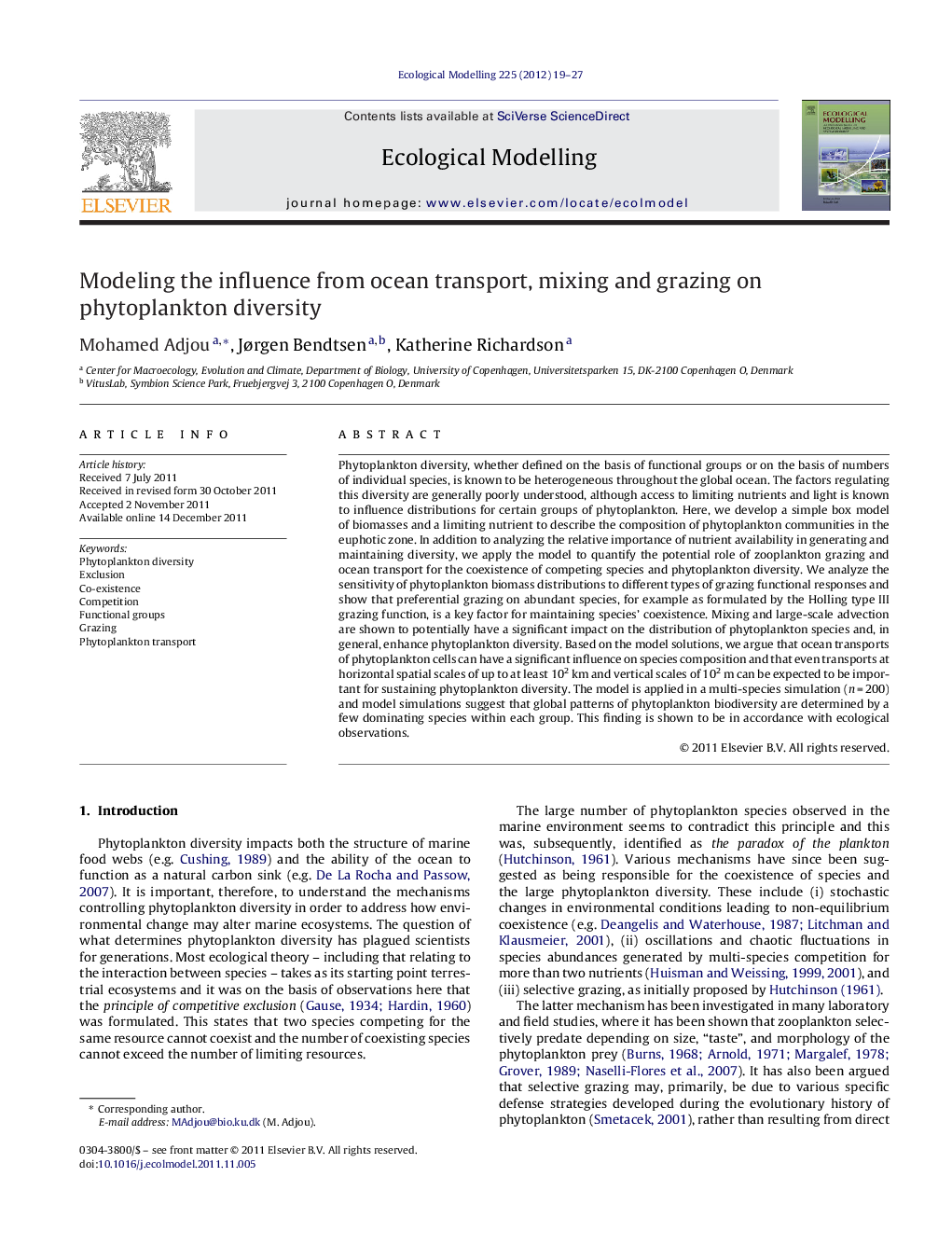| کد مقاله | کد نشریه | سال انتشار | مقاله انگلیسی | نسخه تمام متن |
|---|---|---|---|---|
| 4376596 | 1617518 | 2012 | 9 صفحه PDF | دانلود رایگان |

Phytoplankton diversity, whether defined on the basis of functional groups or on the basis of numbers of individual species, is known to be heterogeneous throughout the global ocean. The factors regulating this diversity are generally poorly understood, although access to limiting nutrients and light is known to influence distributions for certain groups of phytoplankton. Here, we develop a simple box model of biomasses and a limiting nutrient to describe the composition of phytoplankton communities in the euphotic zone. In addition to analyzing the relative importance of nutrient availability in generating and maintaining diversity, we apply the model to quantify the potential role of zooplankton grazing and ocean transport for the coexistence of competing species and phytoplankton diversity. We analyze the sensitivity of phytoplankton biomass distributions to different types of grazing functional responses and show that preferential grazing on abundant species, for example as formulated by the Holling type III grazing function, is a key factor for maintaining species’ coexistence. Mixing and large-scale advection are shown to potentially have a significant impact on the distribution of phytoplankton species and, in general, enhance phytoplankton diversity. Based on the model solutions, we argue that ocean transports of phytoplankton cells can have a significant influence on species composition and that even transports at horizontal spatial scales of up to at least 102 km and vertical scales of 102 m can be expected to be important for sustaining phytoplankton diversity. The model is applied in a multi-species simulation (n = 200) and model simulations suggest that global patterns of phytoplankton biodiversity are determined by a few dominating species within each group. This finding is shown to be in accordance with ecological observations.
► Coexistence of phytoplankton species is sensitive to grazing functional response.
► Ocean transport of phytoplankton may enhance phytoplankton community diversity.
► Simulation of the global relationship between phytoplankton diversity and biomass.
► A new model for understanding macroecological patterns of phytoplankton diversity.
Journal: Ecological Modelling - Volume 225, 24 January 2012, Pages 19–27